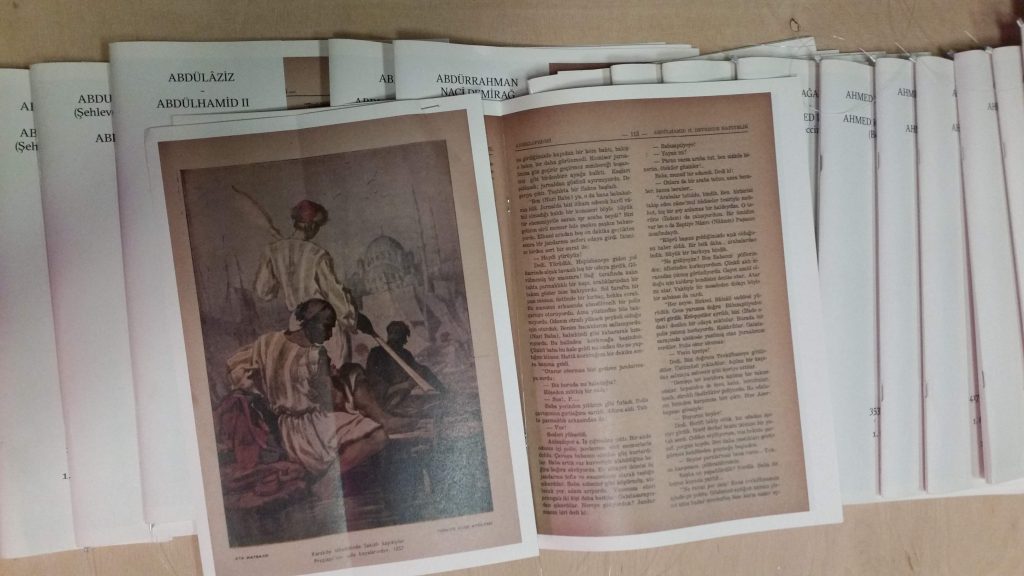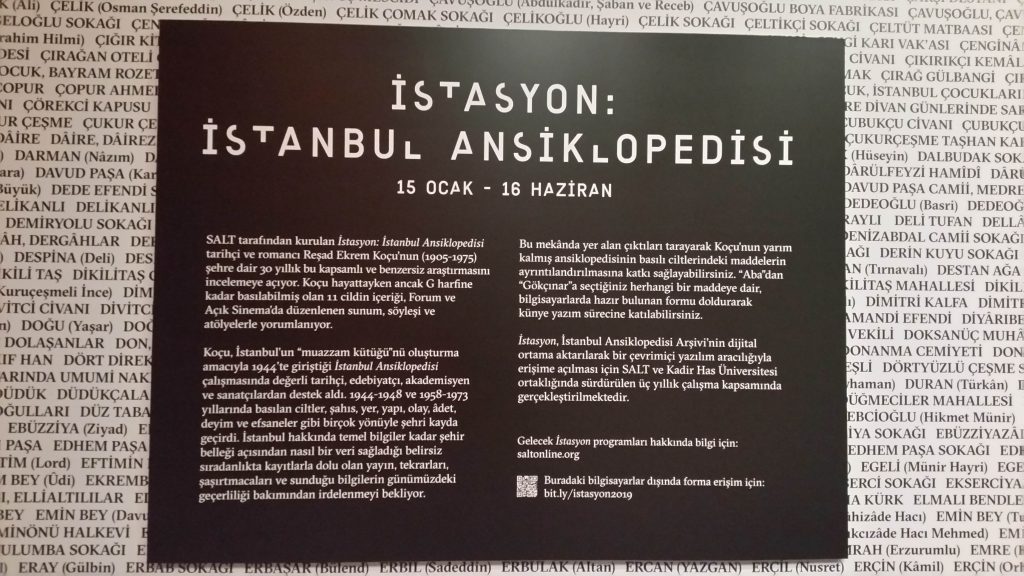Do you recall the days when uncle Google was not only a click away? The days when most knowledge was hidden in those big, fat, dusty books? Long before Wikipedia, encyclopedias existed. I associate this word with libraries, dust and a question mark on my keyboard: encyclopedia or encyclopædia?
I have always visualized an encyclopedia as a Cyclops from Greek mythology in the form of a book. It is definitely a format of book that generations born after the 2000s wouldn’t know if Harry Potter’s movies didn’t exist.

Besides its big and scary format, an encyclopedia is something systematic and organized, even though it contains an innumerable amount of information. Innumerable, countless and never-ending are certainly some of the adjectives which I also relate with Istanbul, though more in a unsystematic, unorganized sense. Now if I was to write an encyclopedia about Istanbul, I wouldn’t really know where to start. Probably with the sound /k/, like for kalabalık or chaos… or with Koçu, Reşat Ekrem, the author of the (incomplete) Istanbul Encyclopedia (İstanbul Ansiklopedisi).
Istanbul Ansiklopedisi
I had first heard about Reşat Ekrem Koçu when reading Orhan Pamuk’s Istanbul: Memories and the City. I liked how Pamuk wrote about Koçu and his encyclopedia project. During his lifetime, Koçu has written “only” articles starting with letters A-G. But there was something special about his project – unlike other similar projects, Istanbul Encyclopedia resembled more of an unfinished novel of Istanbul. It is not that his work is fictional or made up, but the way and approach he used is not the usual, scientific one, which is usually used for this genre.

Reşat Ekrem Koçu started his colossal project in 1944 and was working on it until 1973. Articles included in his encyclopedia cover everything one can possibly imagine – from dolmuş prices, street descriptions, important Istanbulites (not only Sultans and Pashas but also tailors and bakkals), news about fires in Istanbul and even trivial stories, such as the one on the first bicycle seen in Istanbul. He tends to describe the width of the streets of Istanbul by the number of cars that can fit within. He also likes adding trivial details such as streets that get muddy after heavy rains or roads that are partially or fully coated with asphalt.
Especially when narrating important events, such as numerous fires that destroyed various neighborhoods, he cites news from multiple newspapers and sources. For other events alike, moreover, he cites entire dialogues. He always includes his sources – whether they are newspapers or witnesses. His way of approaching history, not only by writing down facts but also sprinkling rare stories on top, makes this encyclopedia catchy and fun to read.

Can we finish the Encyclopedia?
Kadir Has University and SALT have started a project that aims to complete the remaining parts of Koçu’s Encyclopedia, that is from the letter H on. At the moment, SALT Beyoğlu is hosting the exhibition İstasyon: İstanbul Ansiklopedisi (Station: Istanbul Encyclopedia), where you can read the existing parts of the encyclopedia at SALT Beyoğlu as well as suggest and write new articles for the encyclopedia. Unfortunately, the exhibition and the Istanbul Encyclopedia itself are currently only available in Turkish, and you can check out the encyclopedia online.









